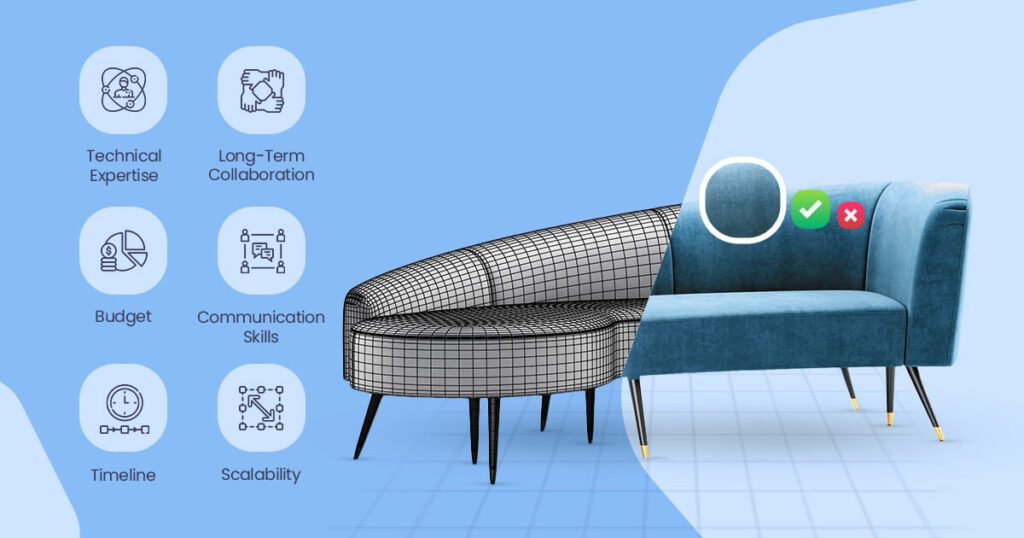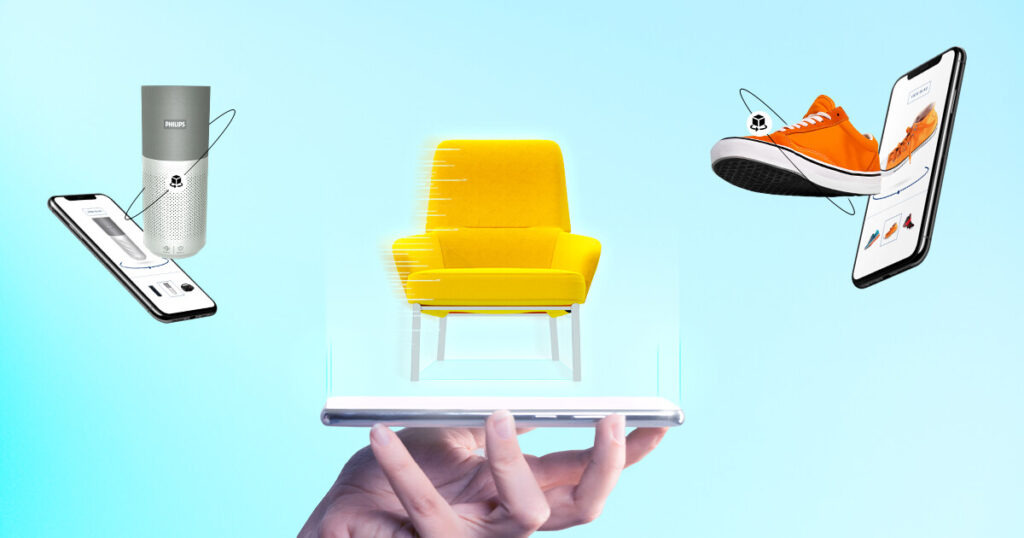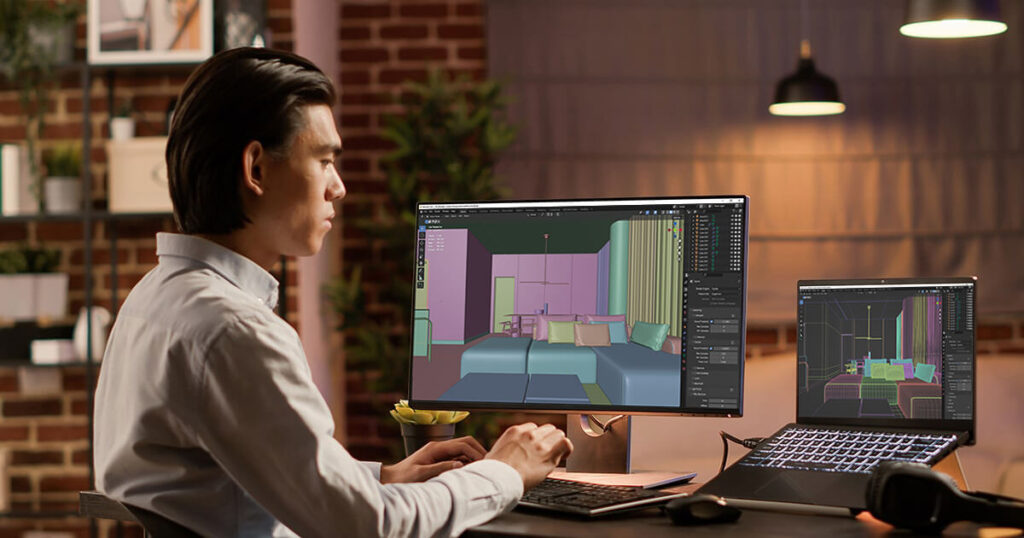What is furniture on a AR in the modern digital age? It is the process of incorporating virtual furniture into physical settings so that consumers can use gadgets like tablets and smartphones to see the things in their actual homes. AR enhances the shopping experience by superimposing digital objects on the actual world, as contrast to Virtual Reality (VR), which submerges consumers in a fully virtual environment.
When thinking about what furniture is on an AR, picture being able to see how a new dining table would fit in your room before making a purchase, or being able to visualize a couch in your living room without having to go anywhere. Customers may “try before they buy,” closing the gap between online and in-store buying, thanks to this technology.
You can never emphasize how important it is to have furniture on an AR. Furniture firms that adopt AR will be better positioned to satisfy client expectations and maintain their competitiveness as consumers get increasingly used to digital interactions. By giving customers the ability to make more confident judgments, this strategy not only improves the shopping experience but also lowers returns and raises consumer happiness.
In summary, what is furniture on a AR mean? This is how furniture purchasing will look in the future: by fusing the digital and physical realms, it will provide consumers a compelling, dynamic experience. This blog article will examine how augmented reality is changing the furniture market and how businesses may use it to their advantage.

Understanding What is Furniture on a AR or Augmented Reality
What is furniture on a AR? It’s the process of using augmented reality technology on tablets or smartphones to see furniture in actual environments. Customers may preview how furniture will appear and fit in their area before making a purchase by incorporating 3D representations of the pieces into a live video stream. Thanks to this invention, shopping and furniture design have changed and are now more personalized and interactive.
The primary benefit of using AR for furniture purchases is the opportunity to “try before they buy,” which removes ambiguity and expedites decision-making. Because AR allows users to experiment with various setups, designs, and combinations in their own houses, it also enhances interior design. This simplicity guarantees a more enjoyable buying experience and lowers returns.
Prominent furniture retailers such as Wayfair and Ikea have previously implemented augmented reality applications to enhance accessibility and customer involvement throughout the shopping process. Using what is furniture on a AR, these firms may increase sales, develop brand loyalty, and improve customer experiences in an increasingly digitalized market.

Tools and Technologies for Creating Furniture AR Models
Investigate the process and technology that make these effective models come to life in order to comprehend what is furniture on a AR looks like. It takes specialized software and platforms to create AR furniture models, which let designers see their creations brought to life through augmented reality.
Overview of Software and Platforms for AR Model Creation
The proper instrument must be acquired before you can make AR furniture models. AR expertise that is interactive may be built with well-known platforms such as Unreal Engine, Unity, ARKit (iOS), and ARCore (Android). In addition to ARKit and ARCore, which are mobile-focused tools for creating readily navigable augmented reality apps, Unity and Unreal Engine are powerful game engines that simplify complex 3D modeling and interactive components.
Essential Skills and Knowledge for Developing AR Furniture Models
Skill in 3D modeling instruments such as Blender, 3ds Max, or Maya, along with familiarity with coding languages like C# or Blueprints, are necessary competencies for developing AR furniture. Realizing what is furniture on a AR requires an understanding of AR development frameworks as well.
Comparison of Popular Tools Available in the Market
While Unity offers variety and user-friendliness, Unreal Engine excels in terms of superb graphics. Blender is the greatest choice for artists on a small budget, whereas 3ds Max and Maya provide more options for modelling.
Steps to Create Stunning Furniture AR Models
When exploring what is furniture on a AR, creating visually appealing and functional AR furniture models is key to delivering immersive experiences. The steps to direct this procedure are listed below.
Developing an Idea for the Furniture’s Style and Function
The process of creating an AR furniture model begins with ideas. The furniture’s motive, elegance, and functionality in an augmented reality setting are all factors that designers need to think about. In order to make sure that the finished product satisfies both effective and aesthetic needs, sketches, prototypes, and mood boards are helpful in developing the concept for what is furnishings on a AR.
3D Modeling Techniques and Best Practices
Producing a digital 3D model with software such as Blender or 3ds Max comes next after conceptualization. Reliability, optimal polygon counts, and precise dimensions are key components of best practices in 3D modelling. In addition to being aesthetically pleasing, this guarantees that the AR furniture model is performance-optimized.
Integrating Textures, Colors, and Materials for Realism
Models of AR furniture are given life by textures, colours, and materials. Vibrant surfaces that resemble wood, textiles, and other materials are applied by designers using UV mapping and texturing methods. A realistic scene also requires well-integrated shadows and lighting.
Testing and Optimizing AR Models for User Experience
Finally, user expertise is guaranteed by testing and optimization. The AR furniture idea may offer captivating and aesthetically beautiful knowledge across a variety of devices by enhancing interactions and maximizing performance.
Conclusion
The furniture business is changing as a result of augmented reality (AR), which is closing the gap between imagination and reality. What is furniture on a AR? Buyers may see and interact with furniture items before making a purchase thanks to this technology, which mixes effective furniture into real-world settings. This invention helps reduce returns and raise buyer happiness, in addition to improving marketing expertise.
We have shown that augmented reality has a lot to offer furniture businesses as well as customers. Using augmented reality (AR), designers may present their goods in a more dynamic and captivating manner, and corporations can utilize it to gain a competitive edge. A more individualized buying experience and better decision-making are produced by the real-time capacity to view what is furniture on a AR looks like.
We urge companies and designers to investigate augmented reality technology and incorporate it into their plans. Adopting AR can provide you a competitive edge in the changing industry as well as creative potential.
Prospectively, augmented reality furniture design appears to have a bright future. Furniture design, visualization, and experience will become ever more inventive and immersive as augmented reality (AR) technology develops, further connecting the virtual and real worlds.
FAQ:
Q. What developments will AR furniture technology see in the future?
Augmented reality (AR) furniture technology allows people to see digital furniture in their physical surroundings with the help of smartphones or AR glasses. Future developments in AR furniture technology should bring forth better interactivity, more realistic materials, and AI-powered customization. The use of complex spatial mapping and smooth integrations with e-commerce platforms will also enhance user experience.
Q. What does accounting regard furniture to be?
Furniture is regarded as a fixed asset in accounting. This indicates that it’s a physical asset utilized in the operations of the company with a useful life of longer than a year. Usually, furniture is written down during its useful life to account for the gradual decline in value.
Q. Is augmented reality useful for home design?
AR has a lot to offer the home design industry. Before making a purchase, it helps you see the furniture and décor in your room, saving you money. Interior designers utilize AR to showcase concepts, and many businesses now provide it.





